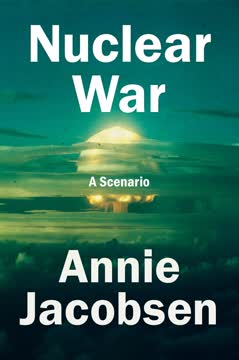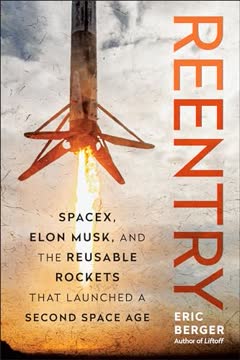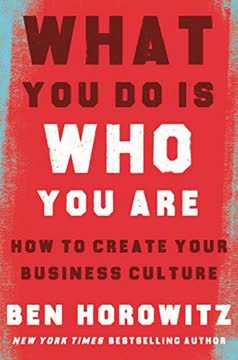Key Takeaways
1. America's industrial might transformed into the "Arsenal of Democracy"
"The Arsenal of Democracy that armed the Allies and defeated the Axis."
Unprecedented mobilization. In a remarkable feat of industrial mobilization, the United States transformed its peacetime economy into a wartime powerhouse. This transformation was so profound that by 1943, American war production exceeded that of Germany, Italy, and Japan combined.
Staggering output. The scale of production was mind-boggling:
- 86,000 tanks
- 2.5 million trucks
- 286,000 warplanes
- 8,800 naval vessels
- 5,600 merchant ships
- 41 billion rounds of ammunition
This massive output not only armed American forces but also supplied critical materiel to Allied nations, turning the tide of World War II.
2. William Knudsen: The Danish immigrant who revolutionized mass production
"Mass production has never depended on speed and never will. The only thing that produces good work is accuracy."
From immigrant to industrial titan. William Knudsen's journey from Danish immigrant to president of General Motors exemplifies the American dream. His expertise in mass production, honed in the automotive industry, proved invaluable when President Roosevelt called upon him to spearhead America's rearmament efforts.
Production philosophy. Knudsen's approach to wartime production was rooted in key principles:
- Break down complex processes into simple, repeatable tasks
- Focus on accuracy and quality over raw speed
- Utilize interchangeable parts to streamline assembly
- Continuously innovate and improve production methods
His leadership at the Office of Production Management (OPM) and later as Director of Production for the War Department was instrumental in scaling up America's industrial output to meet wartime demands.
3. Henry Kaiser: The master builder who redefined shipbuilding
"There is an alternative. It is the shouted order, the broadcast ultimatum, the decision made by an unchallengeable Führer."
Innovative shipbuilding. Henry Kaiser revolutionized shipbuilding with his Liberty ship program, dramatically reducing construction time and increasing output. His innovative methods included:
- Prefabrication of ship components
- Assembly-line techniques applied to shipbuilding
- Welding instead of riveting for faster construction
- Standardized designs for mass production
Expanding horizons. Kaiser's success in shipbuilding led him to venture into other industries crucial to the war effort, including steel production and aircraft manufacturing. His ability to tackle diverse challenges and deliver results earned him the nickname "the Miracle Man" and made him a symbol of American industrial prowess during the war.
4. The automotive industry's pivotal role in wartime production
"When Hitler put his war on wheels, he ran it straight down our alley."
Rapid conversion. The American automotive industry, led by giants like General Motors, Ford, and Chrysler, rapidly converted their civilian production lines to manufacture military vehicles, aircraft engines, and other essential war materiel. This conversion was critical to America's war effort and demonstrated the industry's adaptability and production capacity.
Diverse contributions. The auto industry's wartime production was remarkably diverse:
- Tanks and armored vehicles
- Aircraft engines and components
- Trucks and jeeps
- Guns and ammunition
- Naval engines
By war's end, the automotive industry had produced 50% of aircraft engines, 80% of all tanks and tank parts, and 100% of Army trucks, showcasing its vital role in America's industrial mobilization.
5. Innovation and adaptation: Key drivers of America's industrial success
"Whatever I've done, whatever I've got, is due to the men who helped me. I don't know how I can ever repay for the happiness I have had."
Problem-solving mindset. American industry's success during World War II was largely due to its innovative spirit and ability to adapt quickly to new challenges. Companies and individuals constantly sought ways to improve production methods, overcome material shortages, and develop new technologies.
Examples of innovation:
- Ford's Willow Run plant: Mass-producing B-24 bombers on an assembly line
- Kaiser's prefabrication techniques in shipbuilding
- Development of synthetic rubber to overcome natural rubber shortages
- Adaptation of consumer goods manufacturers to produce war materiel
This culture of innovation allowed American industry to not only meet wartime demands but also lay the groundwork for postwar technological advancements.
6. Labor challenges and triumphs during wartime mobilization
"I've been dreaming about what lies ahead for us."
Labor disputes. Despite the urgent need for increased production, labor issues remained a significant challenge throughout the war. Strikes, union conflicts, and disputes over working conditions threatened to disrupt the war effort at critical junctures.
Workforce expansion. The demands of wartime production led to a massive expansion of the industrial workforce:
- Millions of workers migrated to industrial centers
- Women entered the workforce in unprecedented numbers
- African Americans and other minorities gained new employment opportunities
Labor-management cooperation. Despite ongoing tensions, many companies and unions found ways to work together to meet production goals. Initiatives like joint labor-management committees and no-strike pledges helped maintain productivity while addressing workers' concerns.
7. The rise of women and minorities in the workforce
"I told Melvin later that I helped to make the ship for him to come home in."
Breaking barriers. World War II created unprecedented opportunities for women and minorities in the American workforce. As millions of men joined the armed forces, factories and shipyards opened their doors to previously marginalized groups.
Women in the workforce:
- "Rosie the Riveter" became a cultural icon
- Women took on roles in heavy industry, aviation, and shipbuilding
- By 1944, women comprised 36% of the civilian labor force
Minority advancement:
- African Americans migrated north for industrial jobs
- Executive Order 8802 banned discrimination in defense industries
- Hispanic Americans and Native Americans also gained new employment opportunities
While discrimination persisted, these wartime changes laid the groundwork for future civil rights and women's rights movements.
8. Overcoming material shortages and logistical hurdles
"You can't order a Navy as you would a pound of coffee, or vegetables or meat, and say, we'll have that for dinner. It takes time. It takes organization."
Resource management. The massive scale of wartime production created unprecedented demands on raw materials and resources. Overcoming these shortages required careful planning, innovation, and sometimes difficult trade-offs.
Key strategies:
- Rationing of critical materials for military use
- Development of synthetic substitutes (e.g., synthetic rubber)
- Recycling and scrap drives to reclaim materials
- Prioritization systems to allocate resources efficiently
Logistical challenges. Moving raw materials, components, and finished products across the country and around the world presented enormous logistical challenges. The development of new transportation networks and supply chain management techniques was crucial to keeping the industrial machine running smoothly.
9. The impact of government contracts and business incentives
"I don't think of the hope of reward as selfishness. Work is the prime mover of our economy, and the fuel that makes people work is profit."
Public-private partnership. The U.S. government's approach to wartime production relied heavily on private industry rather than nationalization. This approach required a delicate balance of incentives and regulations to ensure companies could profit while meeting national needs.
Key policies:
- Cost-plus contracts to encourage companies to take on risky projects
- Accelerated depreciation for new plant and equipment
- Government financing for expansion of production facilities
- Relaxation of antitrust laws to allow industry cooperation
These policies helped mobilize American industry quickly while maintaining the fundamentals of the free enterprise system.
10. America's production prowess outpaces Axis powers
"In 1943, American war production was twice that of Germany and Japan combined."
Overwhelming output. By 1943, the United States had achieved a level of industrial output that dwarfed that of its Axis opponents. This productive capacity became a decisive factor in the Allied victory.
Comparative advantages:
- Access to abundant raw materials
- Large, skilled workforce
- Advanced manufacturing techniques
- Relative safety from enemy bombing
- Effective coordination between government and industry
The sheer scale of American production allowed the Allies to overcome initial Axis advantages in military technology and experience. As the war progressed, the United States was able to supply not only its own armed forces but also those of its allies, ultimately overwhelming the Axis powers' ability to compete.
Last updated:
FAQ
What's Freedom's Forge about?
- Focus on American Industry: Freedom's Forge by Arthur Herman explores how American businesses and industrial leaders mobilized to produce military equipment during World War II.
- Key Figures and Contributions: It highlights the roles of figures like William Knudsen and Henry Kaiser in transforming the U.S. economy into a wartime powerhouse.
- Economic and Social Impact: The book discusses the broader economic and social changes, including the rise in wages and the integration of women and minorities into the workforce.
Why should I read Freedom's Forge?
- Unique Historical Perspective: The book offers a detailed account of America's industrial mobilization during World War II, focusing on economic and industrial aspects.
- Inspiring Leadership Stories: It provides valuable lessons in leadership and innovation from figures like Knudsen and Kaiser, showcasing their determination and ingenuity.
- Understanding Modern Industry: Readers gain insights into the foundations of modern American industry and the importance of government-business collaboration during crises.
What are the key takeaways of Freedom's Forge?
- Collaboration is Crucial: The book emphasizes the importance of collaboration between government and industry in achieving large-scale production goals.
- Innovation Drives Success: Innovations in manufacturing processes, such as assembly lines, significantly increased production efficiency.
- Social Change During War: The war catalyzed significant social changes, including the integration of women and minorities into the workforce.
What are the best quotes from Freedom's Forge and what do they mean?
- “My business is making things.”: This quote from William Knudsen reflects his dedication to production and innovation during the war.
- “We can do anything if we do it together.”: Emphasizes the power of teamwork and collaboration in achieving common goals.
- “The arsenal of democracy.”: Describes America's industrial capacity to produce war materials, signifying its transformation into a force for good.
How did American industry change during World War II according to Freedom's Forge?
- Rapid Mobilization: Factories shifted from producing consumer goods to manufacturing military equipment, demonstrating flexibility and resilience.
- Innovation in Production: Innovations in mass production techniques, such as assembly lines, were crucial for efficiency.
- Economic Growth: The mobilization for war stimulated economic growth, laying the foundation for postwar prosperity.
What role did government play in the events of Freedom's Forge?
- Support for Industry: The government supported industrial mobilization through contracts and funding, ensuring factories met wartime demands.
- Policy Changes: Changes to tax laws and contract structures incentivized businesses to invest in wartime manufacturing.
- Leadership and Coordination: Government leaders worked closely with industrialists to coordinate efforts, overcoming bureaucratic obstacles.
How did Knudsen and Kaiser differ in their approaches according to Freedom's Forge?
- Knudsen's Focus on Mass Production: Emphasized mass production techniques and efficiency in manufacturing, shaped by his experience at General Motors.
- Kaiser's Construction Background: Focused on building infrastructure, such as shipyards, using innovative methods for rapid expansion.
- Complementary Strengths: Despite differences, both shared a commitment to American industry and collaboration, instrumental in mobilizing the economy.
What challenges did American industry face during the war as described in Freedom's Forge?
- Supply Chain Issues: Shortages of raw materials and components often delayed production and complicated mobilization efforts.
- Labor Shortages: The need for skilled workers led to changes in labor policies, including hiring women and minorities.
- Bureaucratic Obstacles: Overcoming bureaucratic inefficiencies required strong leadership and decisive action from figures like Knudsen.
How did Henry Kaiser revolutionize shipbuilding in Freedom's Forge?
- Innovative Techniques: Introduced prefabrication methods for rapid ship assembly, setting new industry standards.
- Labor Management: Managed a diverse workforce by fostering teamwork and efficiency, crucial for meeting wartime demands.
- Competition with Other Yards: Encouraged friendly rivalry, spurring innovation and efficiency, leading to record production rates.
What role did Bill Knudsen play in wartime production?
- Leadership in Auto Industry: Instrumental in converting the auto industry to wartime production, boosting military vehicle and aircraft engine output.
- Creation of Production Systems: Developed systems for efficient production and coordination among manufacturers.
- Advocate for Free Enterprise: Championed the idea that a free enterprise system was essential for effective wartime production.
How did American businesses adapt during World War II in Freedom's Forge?
- Rapid Production Scaling: Businesses quickly scaled up production capabilities, converting factories from civilian to military production.
- Workforce Mobilization: The war prompted a massive migration of workers to factories, crucial for maintaining production levels.
- Inclusion of Women and Minorities: Opened job opportunities for women and African Americans, changing societal norms regarding race and gender.
How did Freedom's Forge illustrate the concept of the "Arsenal of Democracy"?
- Massive Industrial Mobilization: Demonstrates how American industry transformed into a powerful war machine, essential for supporting Allied forces.
- Collaboration Between Sectors: Highlights collaboration between government, corporations, and small businesses to achieve common goals.
- Innovation and Efficiency: Showcases innovative approaches to meet wartime demands, emphasizing efficiency and productivity.
Review Summary
Freedom's Forge is praised for its detailed account of America's industrial mobilization during World War II, focusing on key figures like William Knudsen and Henry Kaiser. Readers appreciate the book's exploration of lesser-known aspects of the war effort and its engaging narrative style. However, some criticize the author's perceived political bias, particularly regarding unions and the New Deal. Despite this, many find the book informative and inspiring, offering valuable insights into the transformation of the American economy during a critical period in history.
Similar Books










Download PDF
Download EPUB
.epub digital book format is ideal for reading ebooks on phones, tablets, and e-readers.




